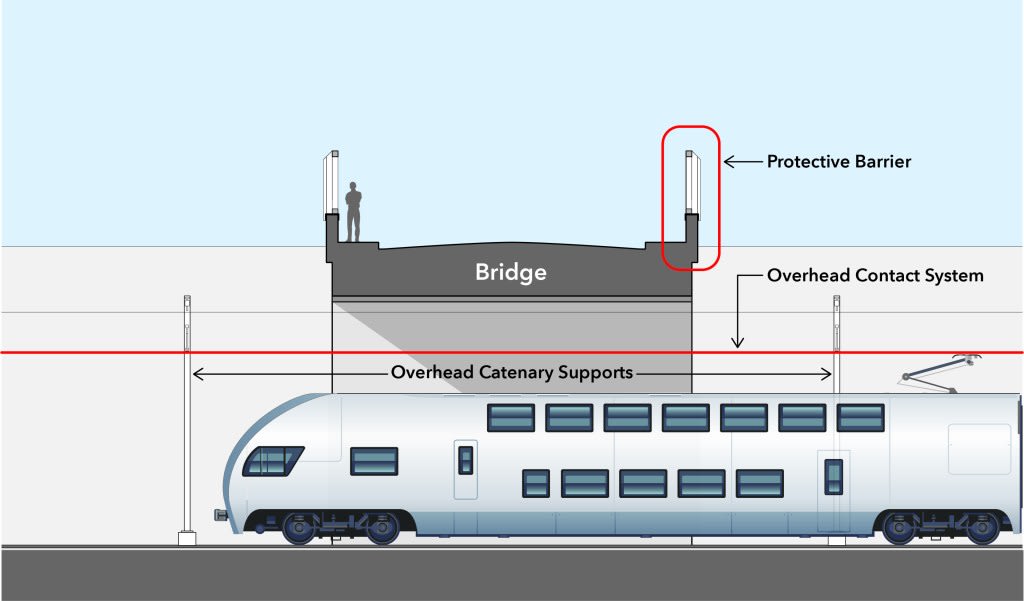Morse code strategy to protect birds as part of electrification
Metrolinx is electrifying most of its network, which means adding protective bridge barriers.
May 4, 2021
Dot-dot-dash-dash, this transit design is meant to catch your eye as well as eyes in the sky.
Metrolinx, along with the City of Toronto and other agencies across the GTHA have worked to develop a design for barriers on bridges to protect people from the Electrification overhead contact system – the overhead wires which will be used to supply electricity for future rail vehicles.
These barriers will often be transparent to maintain the views from the bridges and to enhance the safety of pedestrians and cyclists.
While these protective barriers are an important safety feature, the clear panels also pose a potential danger for the migrating and local bird populations.
Seen here, an example of where these protective barriers will be installed on existing bridges. (Metrolinx Image)
Unlike humans, birds don’t have the natural ability to perceive clear glass as a solid object, especially if it is in their flight path.
Recent estimates from the Avian Conservation and Ecology Journal suggest about 25 million birds die each year from window collisions in Canada and a high number of these fatalities occur in Toronto.
To protect birds from these clear glass barriers, Metrolinx is developing bird friendly patterns using Morse code – that’s right, the iconic telecommunication encoding method that was first developed in the 1800s.
The clear panels will have a series of dots and dashes, creating lines which will stretch vertically.
This is what the Morse code design will look like. It’s a unique concept that carries a symbolic meaning, while meeting the City of Toronto’s technical criteria. (Metrolinx Image)
This is what the Morse code design will look like. It’s a unique concept that carries a symbolic meaning, while meeting the City of Toronto’s technical criteria. (Metrolinx Image)
“The transcontinental railway, along with the telegraph are enduring symbols of Canadian history,” explains John Potter with Metrolinx’ Design Division.
“What is less well known is the role of the telegraph in controlling trains dating back to the 1850’s.”
According to Potter, the telegraph allowed railway companies to manage their schedules and utilize their tracks more efficiently.
Now, nearly 170 years later, Morse code is being used to indirectly communicate with birds, letting them know not to fly into glass.
The design has timeless and abstract quality with the primary objective to protect pedestrians and birds. The rendering above illustrates what the barrier will look like with the glass panels installed. (Metrolinx Image)
These designs will also provide an added benefit of helping to mask the dirt and salt-splash kicked up from roadways. For consistency, the same patterns will also be applied to the opaque panels.
As an added touch, the Morse code on the glass barriers will spell out the names of regional places Metrolinx serves.
A list of all the regional places spelled out in Morse code, all of which will be incorporated as part of the design. (Metrolinx Image)
Potter and his team went through many design iterations, exploring different concepts before coming across this idea.
Since GO Electric Traction System will be implemented in stages along various rail corridors, it might be a few years before we see these protective barriers installed.
The Electrification Protective Barriers are set to go up on 90 bridges across the GTHA.
While unusual and eye-catching – including for birds overhead – this is just one of the elements of the electrification project. Click here to learn more.
by Nitish Bissonauth Metrolinx bilingual editorial content advisor
